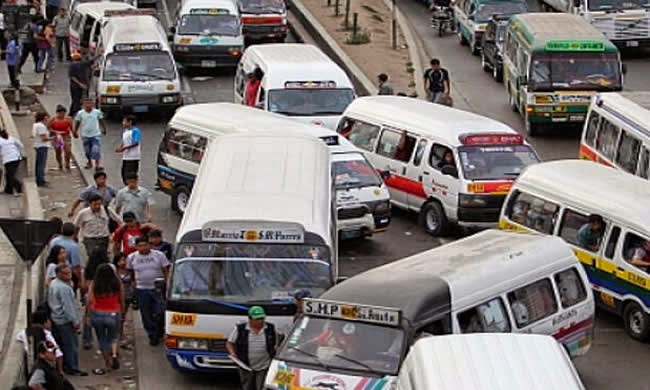The Unofficial Peruvian Traffic Laws
Coming from a strictly organized and disciplined country such as Switzerland, I was overwhelmed with the way traffic works here in Peru. For the average Swiss driver, traffic starts to become complicated and chaotic as soon as you cross the alps on your way south. However, the way Italian drivers maneuver their vehicles becomes tame when compared to Peruvian drivers. Surprisingly, there aren't many accidents - even in Peru's overpopulated capital Lima that is crammed with cars.
The first time I drove a car in Peru was on the way home from Chosica (a district of Lima the the east). Not only did I have to navigate in between trucks, taxis, mototaxis and a wide range of cars (from barely drivable to brand new) but also between the big potholes and frequent speed bumps on the highway. The poor car took a few hard hits when I couldn't avoid a pothole and my hands got sweaty more than once during the two hour drive back to Lima. I was definitely relieved when I finally pulled into the street in front of my apartment.
Now, a few months later, traffic here doesn't scare or stress me anymore. True, you'll see mostly bad or very bad drivers on the road in Lima but if you look a bit closer, you'll notice there is a rhythm and a strange kind of system to the traffic here. Everyone expects everyone else to drive badly, to suddenly change lanes or direction without signaling it or to stop in the middle of the street and that's why everyone is always super alert when driving. In time, you develop a sense of traffic and are able to swerve immediately to your right or left (or perform any other maneuver) if needed.
If you're planning to drive in Peru here are some clues to what to expect:
The first time I drove a car in Peru was on the way home from Chosica (a district of Lima the the east). Not only did I have to navigate in between trucks, taxis, mototaxis and a wide range of cars (from barely drivable to brand new) but also between the big potholes and frequent speed bumps on the highway. The poor car took a few hard hits when I couldn't avoid a pothole and my hands got sweaty more than once during the two hour drive back to Lima. I was definitely relieved when I finally pulled into the street in front of my apartment.
Now, a few months later, traffic here doesn't scare or stress me anymore. True, you'll see mostly bad or very bad drivers on the road in Lima but if you look a bit closer, you'll notice there is a rhythm and a strange kind of system to the traffic here. Everyone expects everyone else to drive badly, to suddenly change lanes or direction without signaling it or to stop in the middle of the street and that's why everyone is always super alert when driving. In time, you develop a sense of traffic and are able to swerve immediately to your right or left (or perform any other maneuver) if needed.
If you're planning to drive in Peru here are some clues to what to expect:
- Speed limit signs seem to serve an ornamental purpose only - in fact, make that a rule for all traffic signs!
- Use of turn-signals appears to be frowned upon and observed sparsely
- Use of the horn is frequent, mostly it expresses an urge for you to move faster or to the side (even when you're stuck behind another car and can't move)
- Police might criticize any part of your car until you slip them a bill
- Intersections frequently get clogged with cars and cause lengthy traffic jams - better wait 10 minutes in a jammed up intersection than letting another car pass in 2 seconds seems to be the right way to handle this
- Potholes and unmarked road maintenance will keep you busy navigating even when streets are empty
- Speed bumps of all forms, colors and sizes turn your drive into a roller coaster ride (and will send your shock absorbers into early retirement)
- Pedestrians might cross streets at any time and any place
- Finding an address in the city is easy - after all, there aren't many districts who have streets with the same names... (if only!)
- Handicapped parking spaces are for the use of everyone if they are empty (sad but true)
- There is no need to use the left lane if you're planning to turn left or the right lane when turning to the right. It is normal to cross up to 4(!) lanes before turning any direction no matter how much of a mess you create.


Here is a video: https://www.youtube.com/watch?v=m5Y4VLMTLiE
ReplyDeleteThat pretty much sums it up. I have seen worse though!
Delete